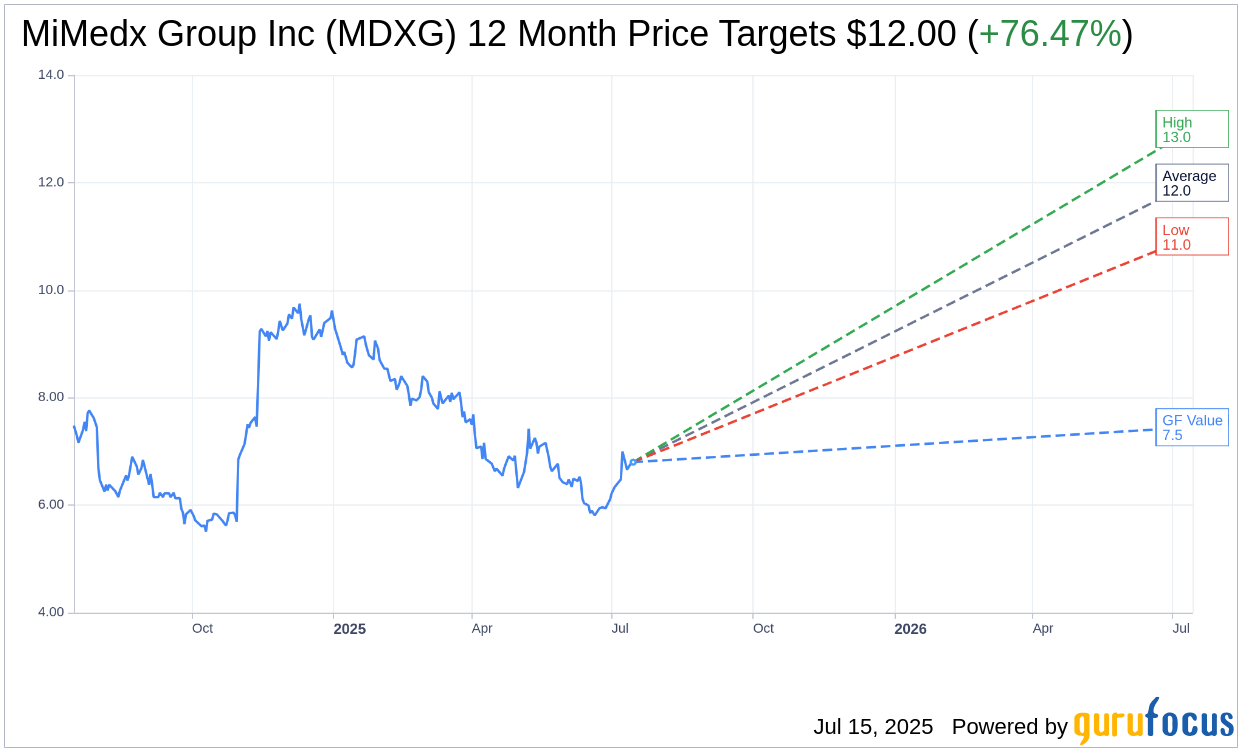MiMedx (MDXG, Financial) may encounter significant pricing adjustments following the Centers for Medicare and Medicaid Services' proposed physician fee schedule for 2026. Under this proposal, MiMedx's products, EpiFix and EpiCord, are expected to see price reductions of 21% and 49%, respectively, based on their fourth-quarter 2024 average selling prices. This potential decrease arises as Medicare highlights the substantial rise in advanced wound care costs over recent years.
BTIG has noted the market reaction to this proposal, especially witnessing the share selloff, as exaggerated. They believe the CMS adjustments could lead to industry consolidation and market refinement. Despite these challenges, BTIG maintains a Buy rating on Organogenesis, another player in the advanced wound care space, but highlights the pressures MiMedx may face with the looming changes. As a result of the fee schedule proposal, MiMedx's stock experienced a decline, dropping 17% to $3.73 in premarket trading.
Wall Street Analysts Forecast

Based on the one-year price targets offered by 5 analysts, the average target price for MiMedx Group Inc (MDXG, Financial) is $12.00 with a high estimate of $13.00 and a low estimate of $11.00. The average target implies an upside of 76.47% from the current price of $6.80. More detailed estimate data can be found on the MiMedx Group Inc (MDXG) Forecast page.
Based on the consensus recommendation from 5 brokerage firms, MiMedx Group Inc's (MDXG, Financial) average brokerage recommendation is currently 2.0, indicating "Outperform" status. The rating scale ranges from 1 to 5, where 1 signifies Strong Buy, and 5 denotes Sell.
Based on GuruFocus estimates, the estimated GF Value for MiMedx Group Inc (MDXG, Financial) in one year is $7.45, suggesting a upside of 9.56% from the current price of $6.8. GF Value is GuruFocus' estimate of the fair value that the stock should be traded at. It is calculated based on the historical multiples the stock has traded at previously, as well as past business growth and the future estimates of the business' performance. More detailed data can be found on the MiMedx Group Inc (MDXG) Summary page.
MDXG Key Business Developments
Release Date: April 30, 2025
- Net Sales: $88 million, representing 4% growth year-over-year.
- Adjusted Gross Profit Margin: 84% for the quarter.
- Adjusted EBITDA: $17 million, or 20% of net sales.
- Cash and Cash Equivalents: $106 million, an increase of $2 million during the quarter.
- Surgical Business Growth: 16% increase in sales.
- Wound Sales: $56 million, a decline of 2% year-over-year.
- GAAP Net Income: $7 million, or $0.05 per share.
- Adjusted Net Income: $10 million, or $0.06 per share.
- Free Cash Flow: $5 million, flat compared to the same period last year.
- R&D Expenses: $3 million, or about 4% of net sales, up 17% year-over-year.
For the complete transcript of the earnings call, please refer to the full earnings call transcript.
Positive Points
- MiMedx Group Inc (MDXG, Financial) reported a 4% year-over-year increase in net sales for Q1 2025, reaching $88 million, despite a challenging comparison from the previous year.
- The company's surgical business experienced double-digit growth, with a 16% increase in sales, driven by strong performance in products like AMNIOEFFECT and HELIOGEN.
- MiMedx Group Inc (MDXG) ended the quarter with $106 million in cash, marking a $2 million increase, which is notable given the typically higher cash burn in Q1.
- The company is actively expanding its product portfolio, with new offerings like CELERA and HELIOGEN gaining traction in the market.
- MiMedx Group Inc (MDXG) is well-positioned to accelerate growth throughout 2025 and beyond, with strategic priorities focused on innovation, expanding its surgical market footprint, and enhancing customer relationships.
Negative Points
- The company faced challenges in its wound care business, with sales declining by 2% due to Medicare reimbursement disruptions and turnover in sales representatives.
- MiMedx Group Inc (MDXG) is experiencing pressure on its gross margins, with a decrease from 85% to 81% year-over-year, partly due to changes in product mix and ASPs.
- The ongoing delays in Medicare reimbursement reform for skin substitutes continue to create uncertainty and hinder potential growth in the private office market.
- Despite efforts to adapt to the current reimbursement environment, the company's lower-priced wound care products are less attractive to providers, impacting revenue growth.
- The company cautions against expecting significant financial gains from its pivot to higher-priced third-party manufactured allografts, as only 25% of its business is exposed to ASP fluctuations.
